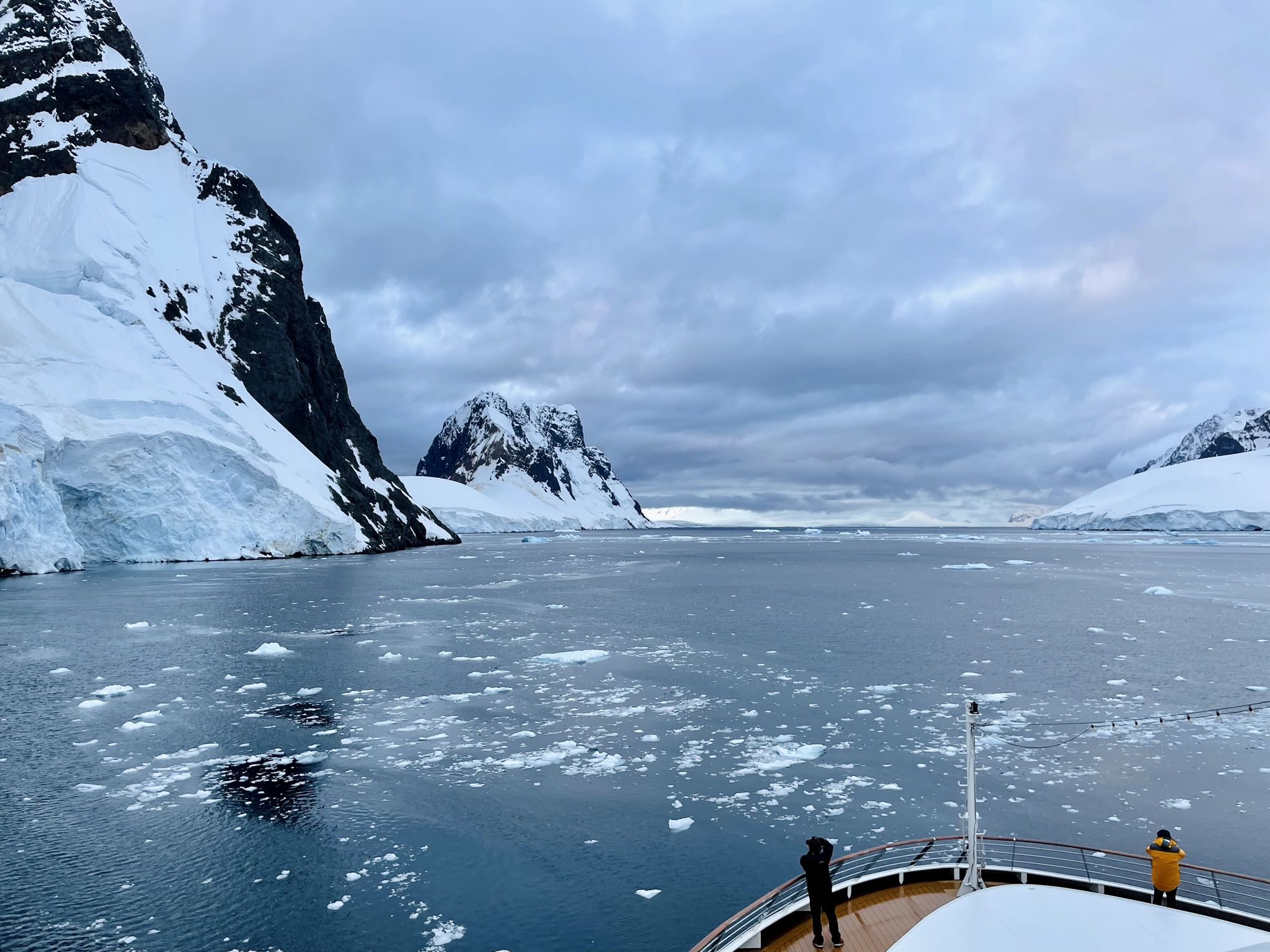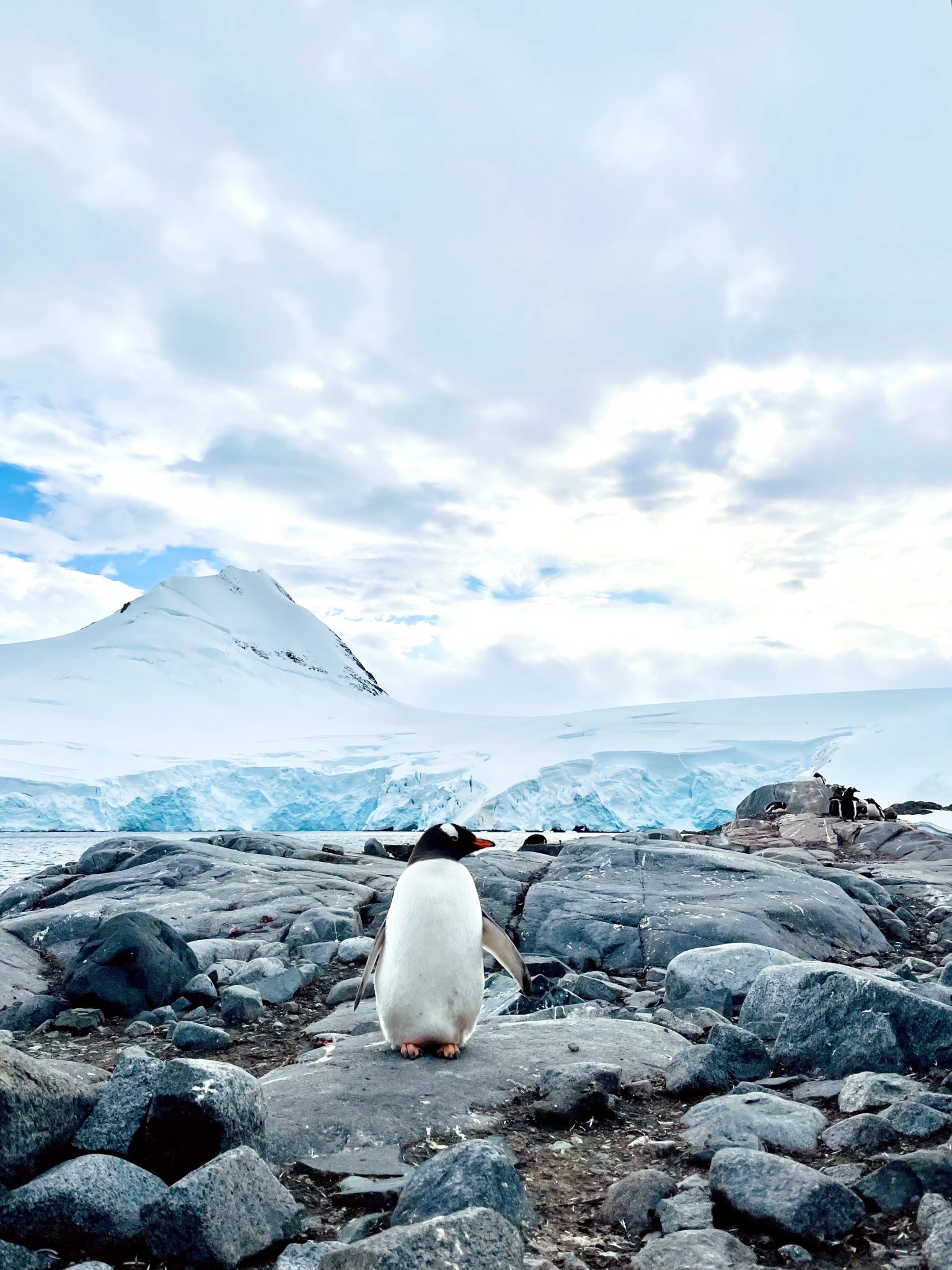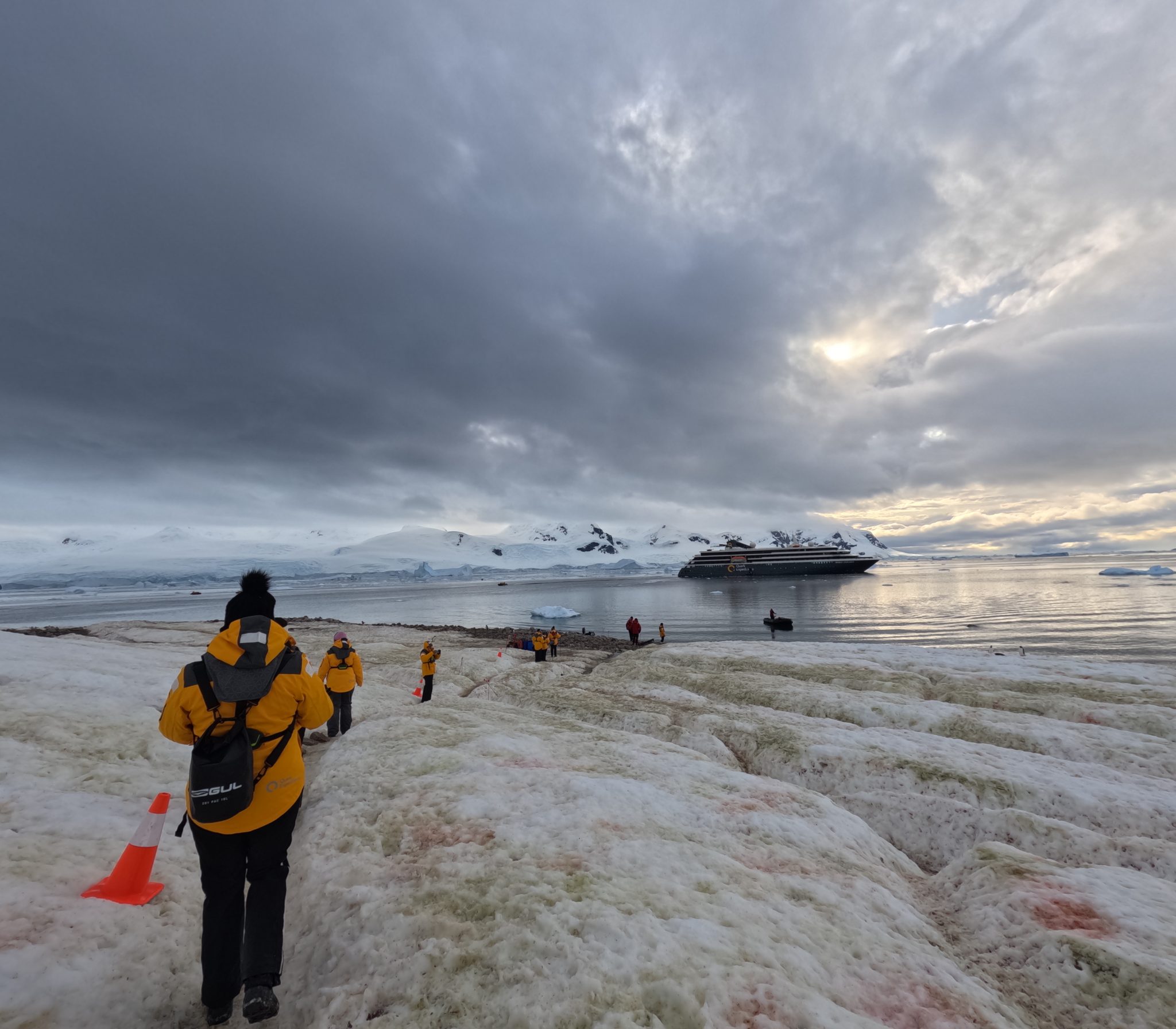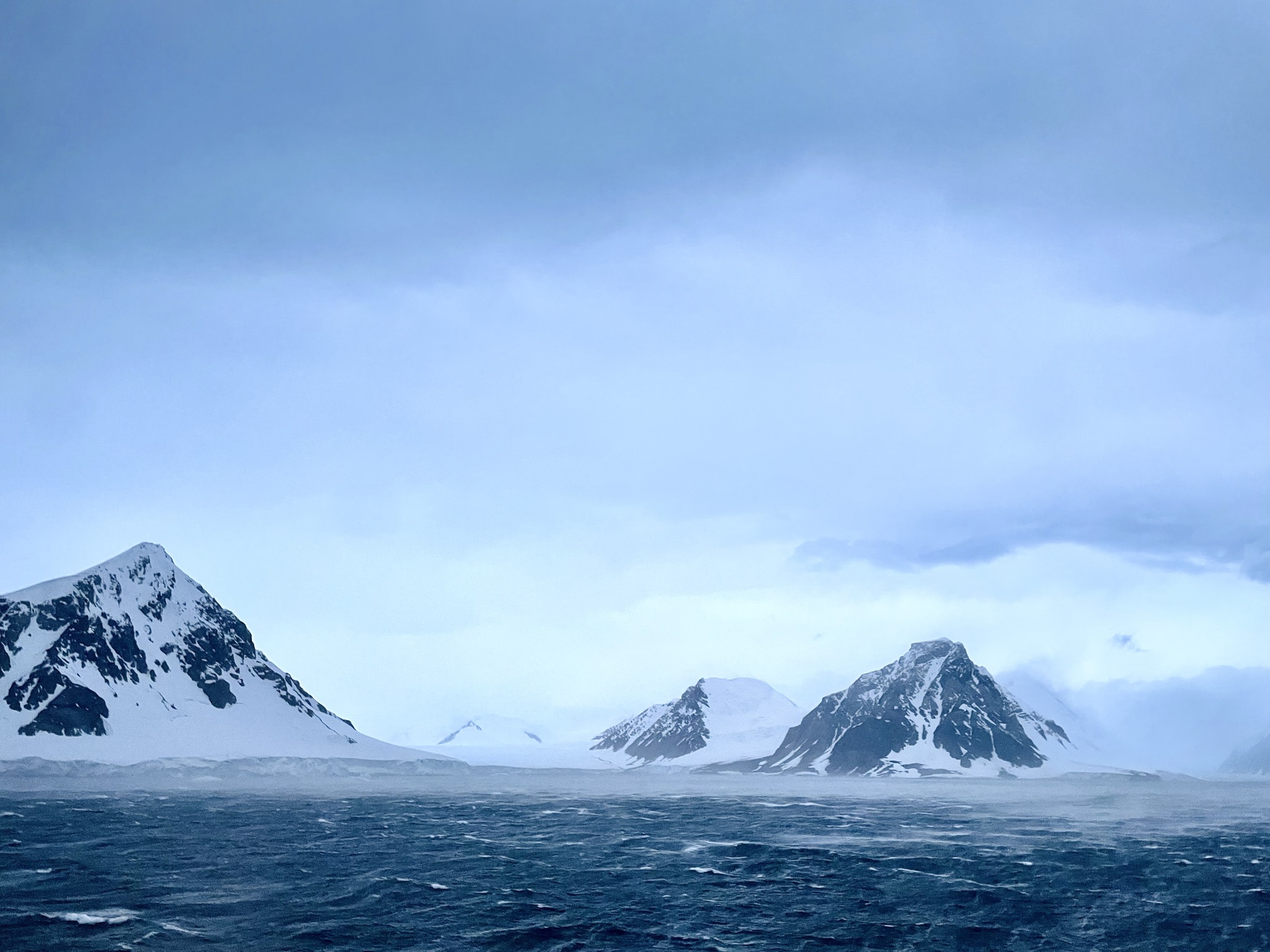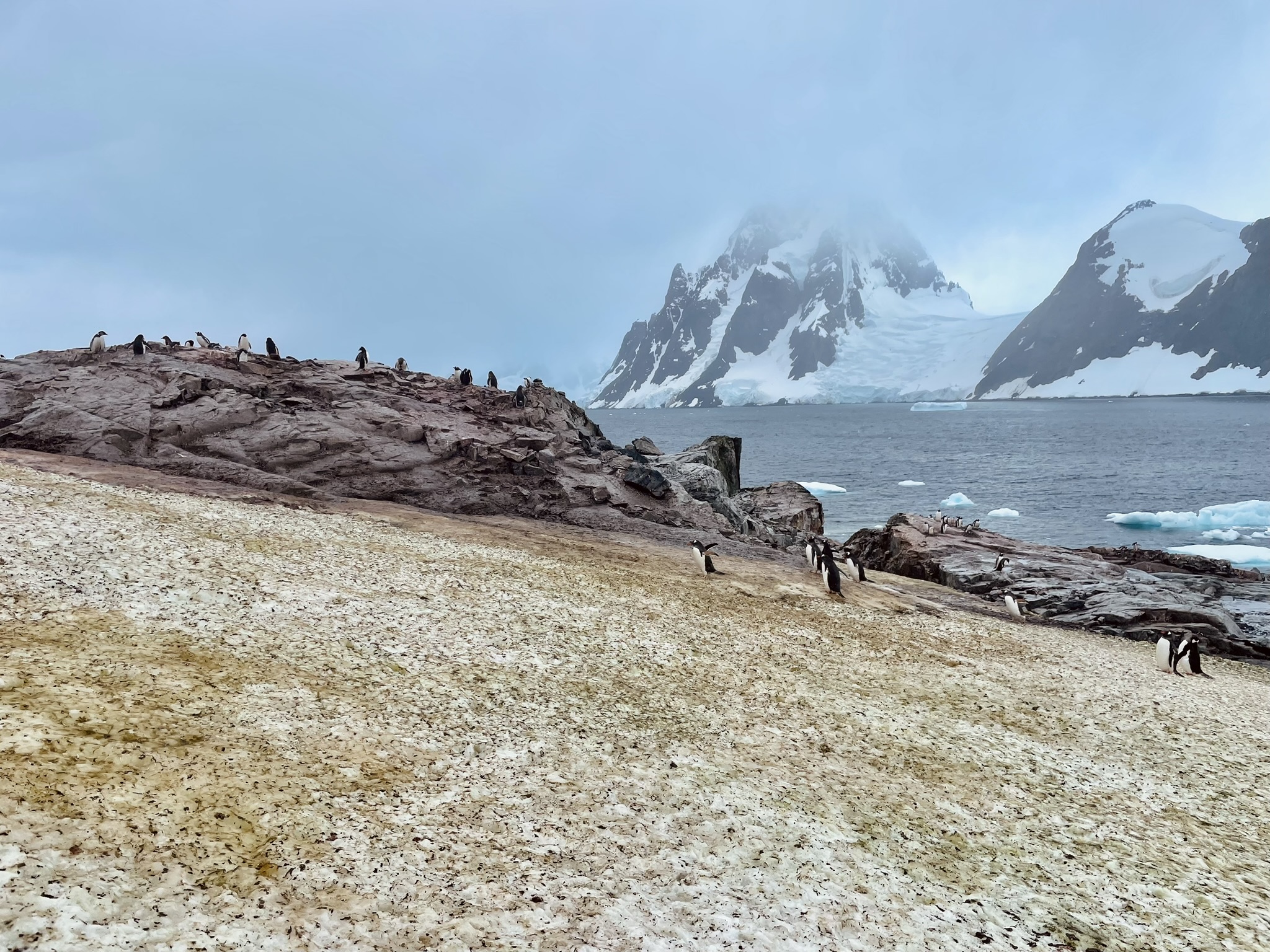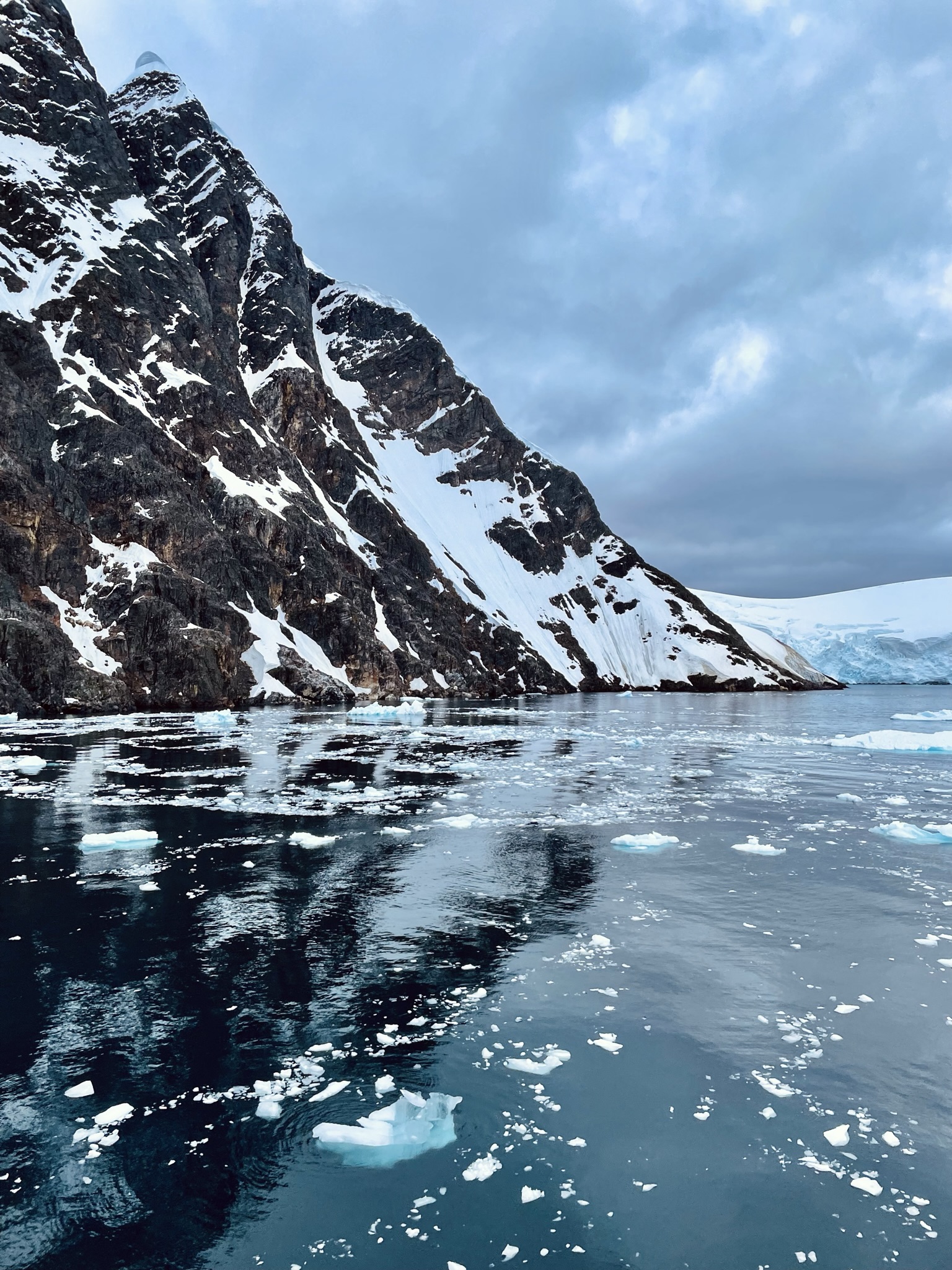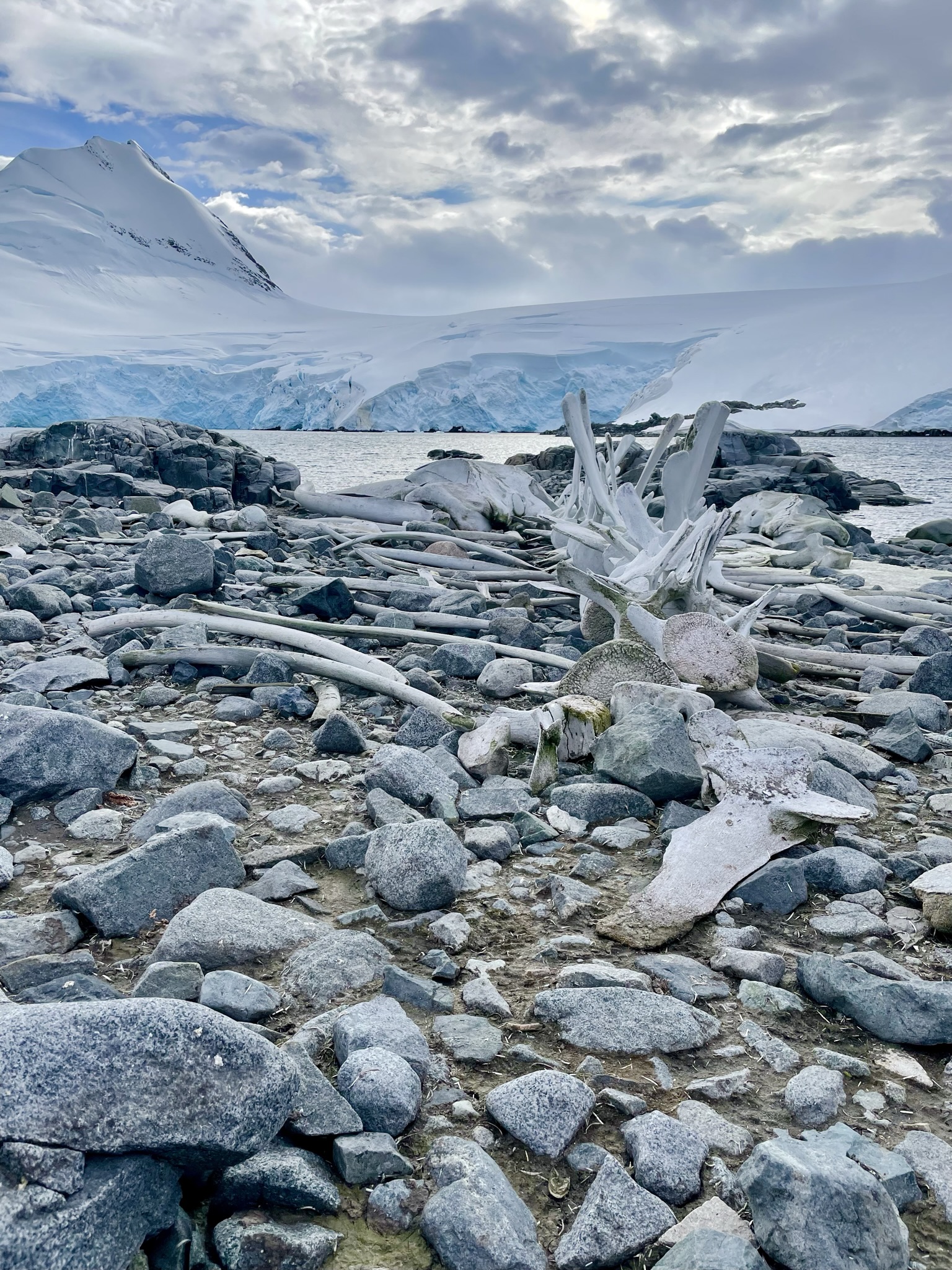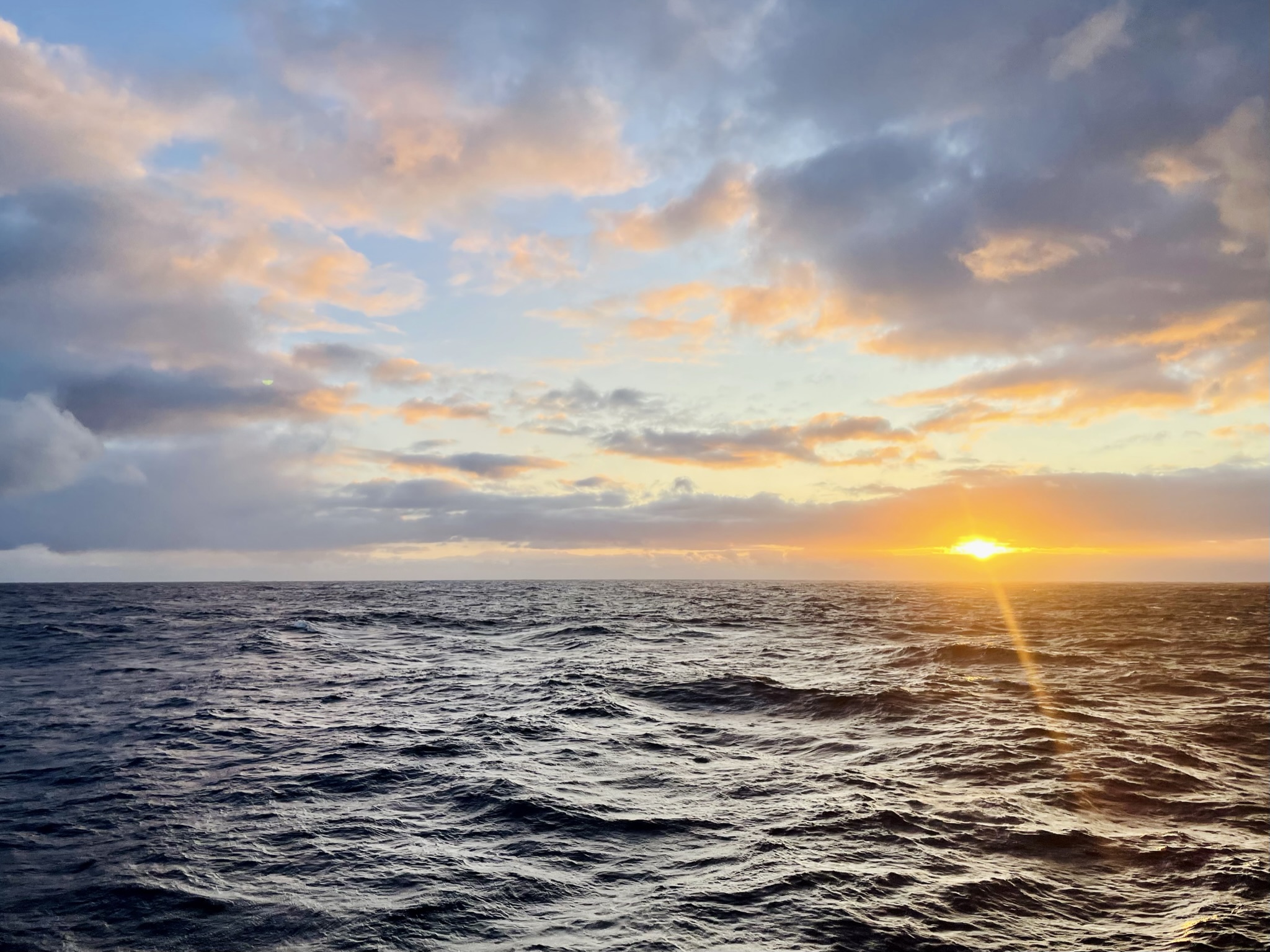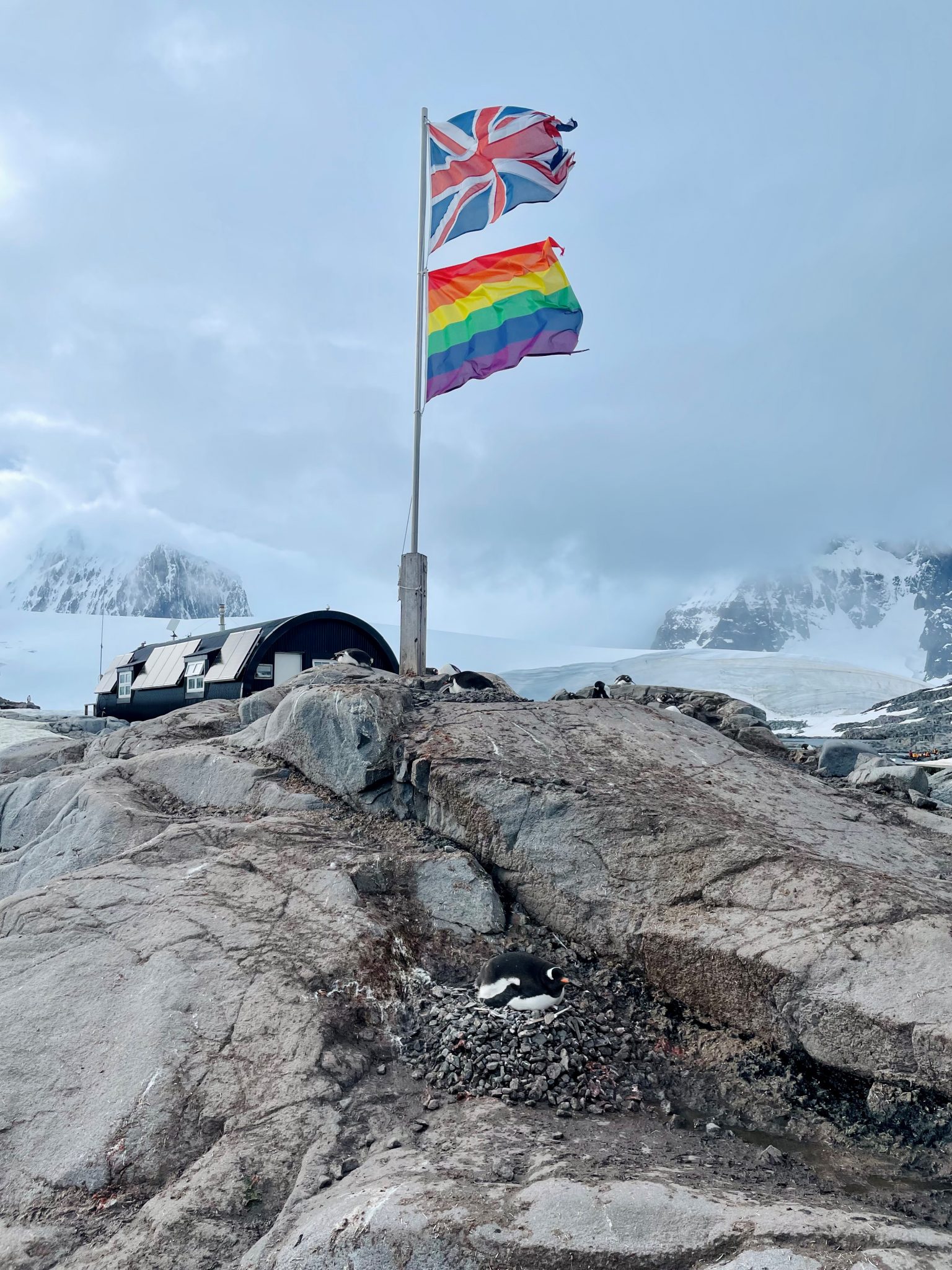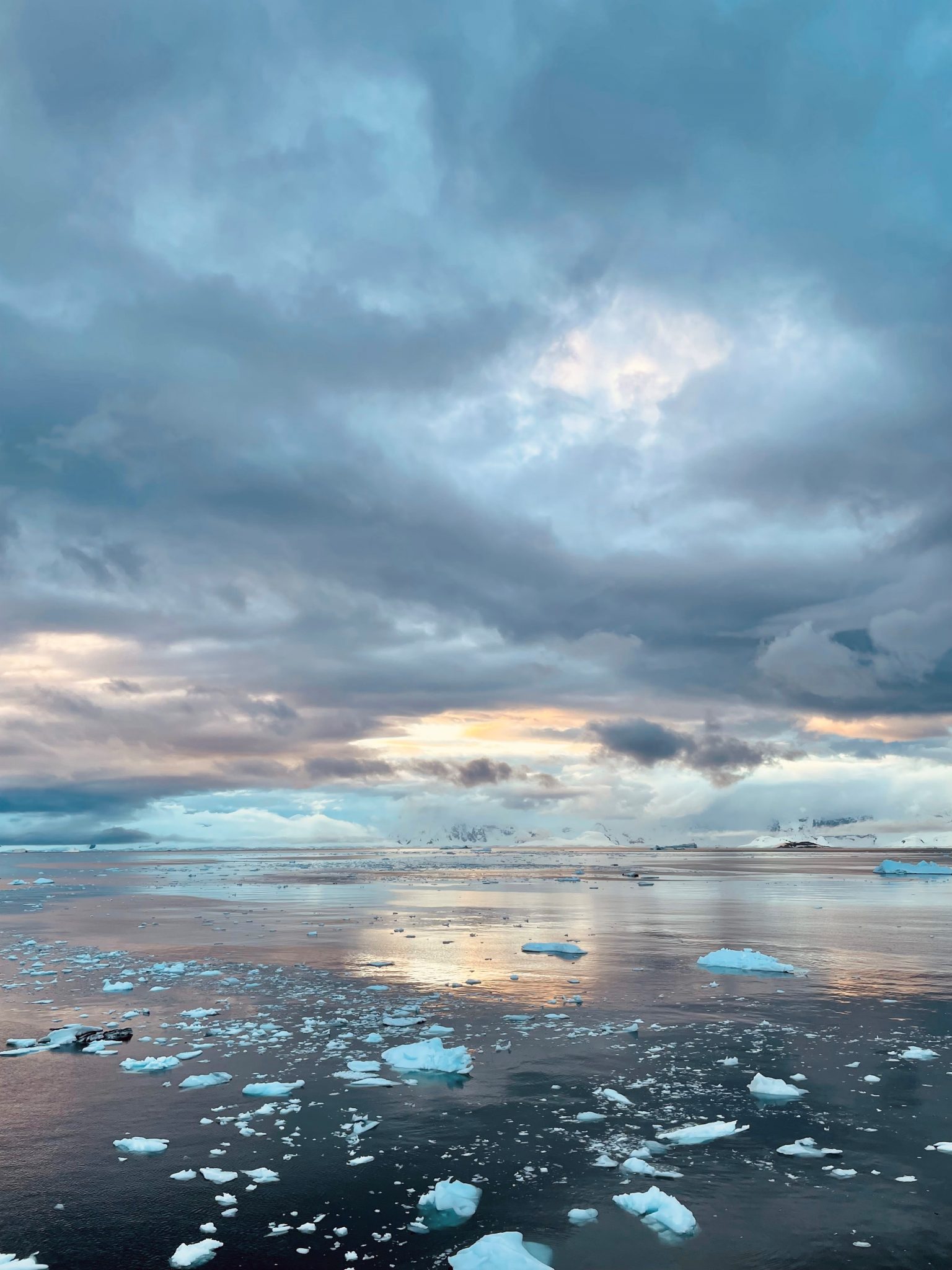Antarctica
Antarctica. This elusive 7th continent remained hidden from humanity until just 200 years ago and has since captivated the attention of explorers, adventurers, researchers, storytellers, and perhaps now, you.
It’s only been since the 60s that members of the general public were able to travel to the very south of our planet, and since then, every year has seen more and more people hungry to visit this notably unique landscape.
For most, Antarctica is a dream – a once in a lifetime adventure – which is why it’s so important to choose the right trip, the best experience for you, so that you can get the most of your time in the most spectacular and otherworldly place that earth has to offer.
Millie visited in February of 2023 and here are her top tips to remember!
- Understand Which Experience Suits You
Travel to Antarctica is largely governed by an organization called IAATO. They’ve made steadfast rules governing exactly how expedition ships are able to travel in Antarctic waters, to protect the land, sea, and those that live there. The rule of thumb is as follows:
Ships with over 500 passengers: Cannot make any landings, only sail through the waters. This experience is perfect for those who perhaps don’t feel up to stepping on land, and for those that are more interested in the scenery than the wildlife on shore.
Ships with between 200 & 500 passengers: Can make landings at some sites.
Ships with under 200 passengers: Can make landings most frequently.
If you’re looking to step foot on the continent and her islands as often as possible, aim for a smaller ship. This experience is perfect if you want to make the most of your time, visiting land as often as possible, and getting more up close and personal with the wildlife – specifically, penguins!
- Expect the Unexpected
A cruise to Antarctica is unlike the leisure cruises that sail most anywhere else in the world. Usually, you can expect a set itinerary telling you where you will be and at what time you will arrive there, with a little room for change worked in there for good measure. In Antarctica, this simply isn’t possible. The weather is unpredictable and with each season the landscapes can change; sometimes in slight ways, sometimes dramatically. The captain and expedition leader will do everything in their power to show you as many landing sites as possible, but don’t go down to Antarctica anticipating to see a very specific place. Schedule changes are common, but for everything that changes you’ll be shown something else incredible just around the corner.
- Wildlife!
You might look at the barren white glaciers and snow crusted mountains and think that Antarctica is void of life, but you’d be wrong. The continent hosts an abundance of fauna and even flora, if you know where to look! The Antarctic Sea is home to a slowly rising population of whales (after the catastrophic decrease at the hands of the whaling industry in the 20th century), an abundance of seals, a cacophony of penguins, thousands of other seabirds, and an estimated over 700 trillion Krill! Everywhere you go there are the signs and sounds of life. Whether from the thousands of Gentoo and Adelie penguins in Petermann Island (and many other colonies around the peninsula!) or the huffing of Humpbacks surfacing to take their breaths in the otherwise silent Crystal Sound, I can personally attest that it’s all around you, wherever you are.
- Soak in the Knowledge
You don’t have to be an expert in the polar regions to enjoy a trip to Antarctica.
Travelling with Quark is synonymous with living inside a nature documentary. Landings and continent aside, the one part of the whole experience that impressed me most was just how cleverly the expedition team utilize your time so you can learn as much as possible. Before coming to Antarctica, I could never distinguish between the different types of penguins and other sea birds, I couldn’t tell whales apart, nor the various seals living here. During our time onboard crossing the Drake, we explored landscapes, glaciers, katabatic winds and icebergs. We discovered the history of polar exploration. We learned so much about the flora and fauna of Antarctica that by the time we’d reached the continent, we were all pointing to the Storm Petrels, Humpbacks, Leopard seals, Adelie’s, and so much more, calling them by name as if we were now the experts. The expedition team are what sets Quark aside from any others. They are the only company with their own dedicated training programme that attracts the best of the best, and I’ve never met a group of people quite so passionate about what they do. They immerse themselves in your experience and utterly made our trip what it was.
- Be Brave…!
One of the best parts of my trip to Antarctica was how it gives you opportunity to step outside your comfort zone. Some of you might know what I refer to when I talk about the Polar Plunge!
One of my deepest fears is the ocean. Funny, I know, when I’m such an avid cruiser. It’s not mandatory by any count, but if any of you are like me and find the fear of missing out to be far greater than your own instincts, it’s an experience that cannot be missed! Tethered by a harness around your waist, you jump from the ship platform into the crisp, salty sea, as the ships photographer captures your leap of faith! Between jumping in and climbing back out for your warm robe and the beckoning sauna, you’re only in the water for a matter of seconds. The water genuinely wasn’t as cold as I thought it would be (probably due to adrenaline!), there’s a team of staff in zodiacs and on ship there with you, and it’s without a doubt one of the best things I’ve ever done in my life.
- Where to Go?
While no itinerary is set in stone, there are a number of enticing directions to travel that promise different experiences and with that, there are different itineraries to choose from. There are itineraries that visit the Antarctic Peninsula, some that go as far south as the Antarctic Circle, some that visit South Georgia and the Falklands, and even some incredibly exclusive sailings that visit little known and lesser seen areas of Antarctica such as Snow Hill – home to 10,000 Emperor Penguins. As I write this, there are just two cruises EVER scheduled for November 2023, this is in one of the top three most exclusive wildlife encounters in the world. The most important thing to decide is what is most important for you to see and we’ll suggest what will suit you best.
- When to Go?
Travel to Antarctica is only possible during the Southern Hemisphere’s summer months – our winter. The season usually runs between November and March. There isn’t particularly a best month to go within that, but different seasons do offer different experiences. For Whales, February and March are best as they’re at their peak numbers. In December and January you will experience the longest days and milder temperatures. November, being at the beginning of the season is cooler as the summer just starts to warm up, but with that you have incredible giant ice floes, bergs, and sculptures. It’s certainly the most scenically dazzling, while still offering an abundance of wildlife!
- Getting There
Cruises to Antarctica leave from a number of southerly points in the world. New Zealand, Australia, and South Africa to name a few, but these require many days of sea crossing which limits your time on the continent. By far the best way to get to Antarctica is via South America – Ushuaia, Argentina. Ushuaia is the southernmost city in the world, although in reality it’s smaller than many cities we may know, and reminds me of Canadian Skiing towns, or the mountain towns further north of Patagonia.
From the UK the easiest route to Ushuaia is to fly via Buenos Aires. I visited Buenos Aires on a separate trip and would highly recommend some time in this vibrant and varied city both before and after your cruise. Not only to coincide with your flights and break up the travelling, but because it would add another layer of depth to your trip, a warm and colourful contrast to the cold white expanse you’ll experience further south.
- Crossing the Drake
The Drake Passage. It’s an infamous body of water stretching from the southern tip of South America to the Antarctic Peninsula. With my own fear of the ocean and susceptibility to sea sickness I’d be lying if I said I wasn’t nervous for the two and a half day crossing each way. The Drake Passage experience really is different for everyone and on every cruise but all I can say from mine is that it truly wasn’t as bad as I thought it would be. One thing to remember when watching the videos online is people don’t post videos when the crossing is calm, it wouldn’t get nearly as many views! The ship is fitted with some excellent stabilizers, and there is a doctor onboard with an array of seasickness medication you can take as and when you need it. It took me a day to get my sea legs but I was shocked at the fact that I wasn’t actually unwell during the whole voyage, and pretty much everyone was out and about experiencing the activities on the ship both directions. Our crossing was so calm on the way back that we actually arrived back into Ushuaia half a day early, meaning we hit land and sailed through the Beagle Channel during the daylight. This gave us incredible views of Hourglass and Dusky Dolphins, Sei and Humpback Whales, Magellan Penguins, and even some distant Orca when it would usually be too dark to see them! My biggest recommendation is to be overprepared. While we were lucky with the Drake, I know I wouldn’t have managed it without the motion-sickness wristbands, sickness patches that went behind both ears, or the seasickness tablets from the ships doctor.
- Dress for Success!
One of the things I’ve been asked most since my trip is what clothing you need to bring with you. The most important items of clothing you need are waterproof trousers and thermals. A lovely touch from my trip with Quark was that we were given a top of the range multi-layered parka to use onboard and onshore, and take home with us afterwards! So, you don’t need to bring a ski jacket, just layers and then of course whatever coat you wish to use prior to boarding. You’re also given boots to use onshore, but these remain in the mudroom.
I only brought one pair of shoes with me for the whole trip, a pair of trainers that I used onboard. I only changed into my thick socks and wore the provided boots for zodiac cruises and going onshore.
If you have ever been skiing, it’s a similar dress code for time off ship. Salopettes also work just fine as waterproof trousers! A good tip for anyone who doesn’t already own waterproofs and doesn’t plan on needing them afterwards, Ushuaia is chock-full of stores that you can buy or rent your equipment from to save bringing it all the way with you.
An Antarctic voyage isn’t a formal affair – comfort and warmth come before anything else. From all the cruises I’ve taken before it’s always been lovely to get dressed up for dinner and put a nice dress and heels on, but in this instance, it was actually a refreshing change to not have to worry about any of that. Most days I wore jeans and a jumper, even at dinner. I packed light but warm, but all those I spoke too who had brought a lot more admitted that they’d hardly touched most of it.
In Summary…
Picture being onboard a ship with around 150 other people. All casual, like-minded and adventurous individuals ranging from the ages of 14 to 83! By the time we reached Antarctica and crossed the circle it already felt like a large family. By the last night before disembarkation, myself, the guests, the crew and the expedition team were all dancing, singing, chatting and laughing together, and I’m not ashamed to say how emotional it felt as we all went our separate ways.
Travelling to Antarctica is a privilege. The indescribable feeling of visiting the most volatile, the most ethereal, and the most remote place on the planet unites those who get the opportunity. There is a place in my heart where I will treasure my time in Antarctica for the rest of my life, and I would urge anyone who has the opportunity to go. To experience what I hope I’ve been able to convey a glimpse of.






